Bravery & Greed Review
Another rogue-lite worthy of the name and your time
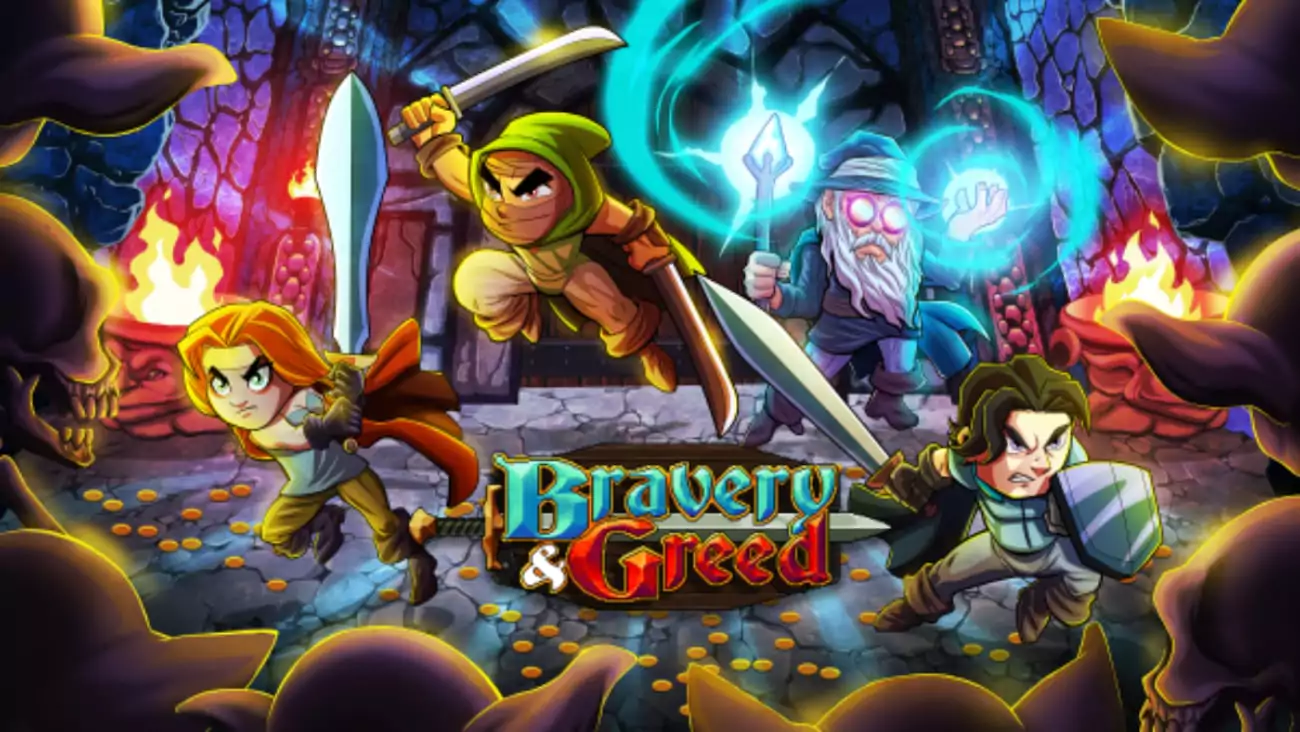
Bravery & Greed's genre categories will grab the attention of anybody that has been playing indie games over the last eleven years and give them reasonably high expectations. Marketing itself as a “beat em’ up, rogue-lite, dungeon crawler”, Rekka Games has enticed players that have been itching for a side-scrolling action rogue-lite since having been addicted to Dead Cells in 2018. This game is not as revolutionary as Dead Cells, but what it does offer is a glimpse into just how far we have come in defining a genre of arcade-style gameplay in an age where progression and virtual proprietorship dominate the video game market.
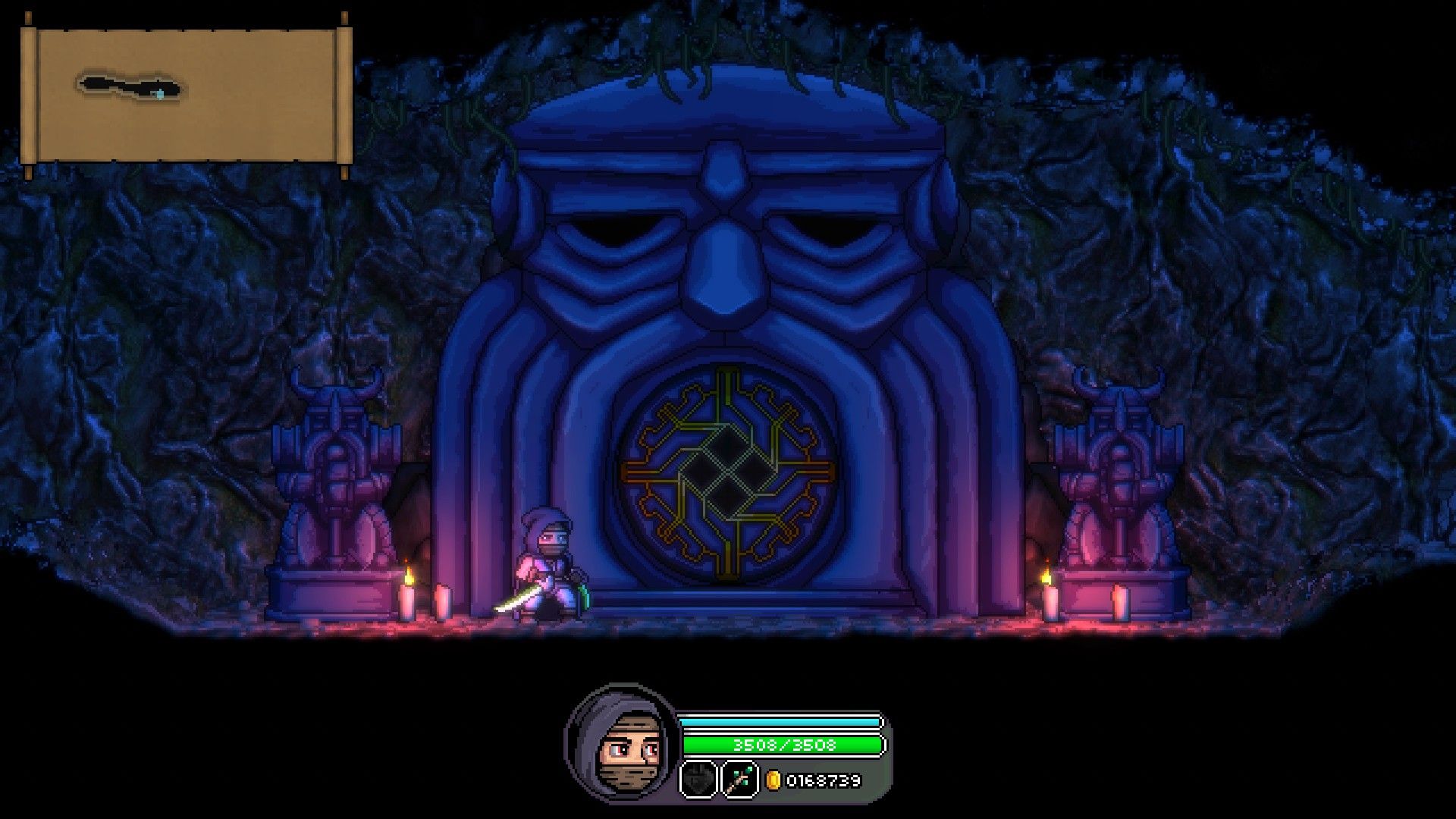
The tried and true fantasy staples shine through as the game very quickly sets up its story. Your adventuring party seeks the fame and fortune of discovering a Dwarven treasure horde hidden away in a lost sky fortress. You're tipped off that a portal concealed by a waterfall will open if you bring four crystals to its entrance. The caveat to this is that each crystal is guarded by a guardian in a variety of locales scattered across the land. A run of Bravery & Greed sees you tackling each of these four levels to gather the crystals necessary to forge a path to the Dwarven treasure. When you start your adventure, you and up to three other players via online or couch co-op pick a class among classic fantasy tropes and head into the world.
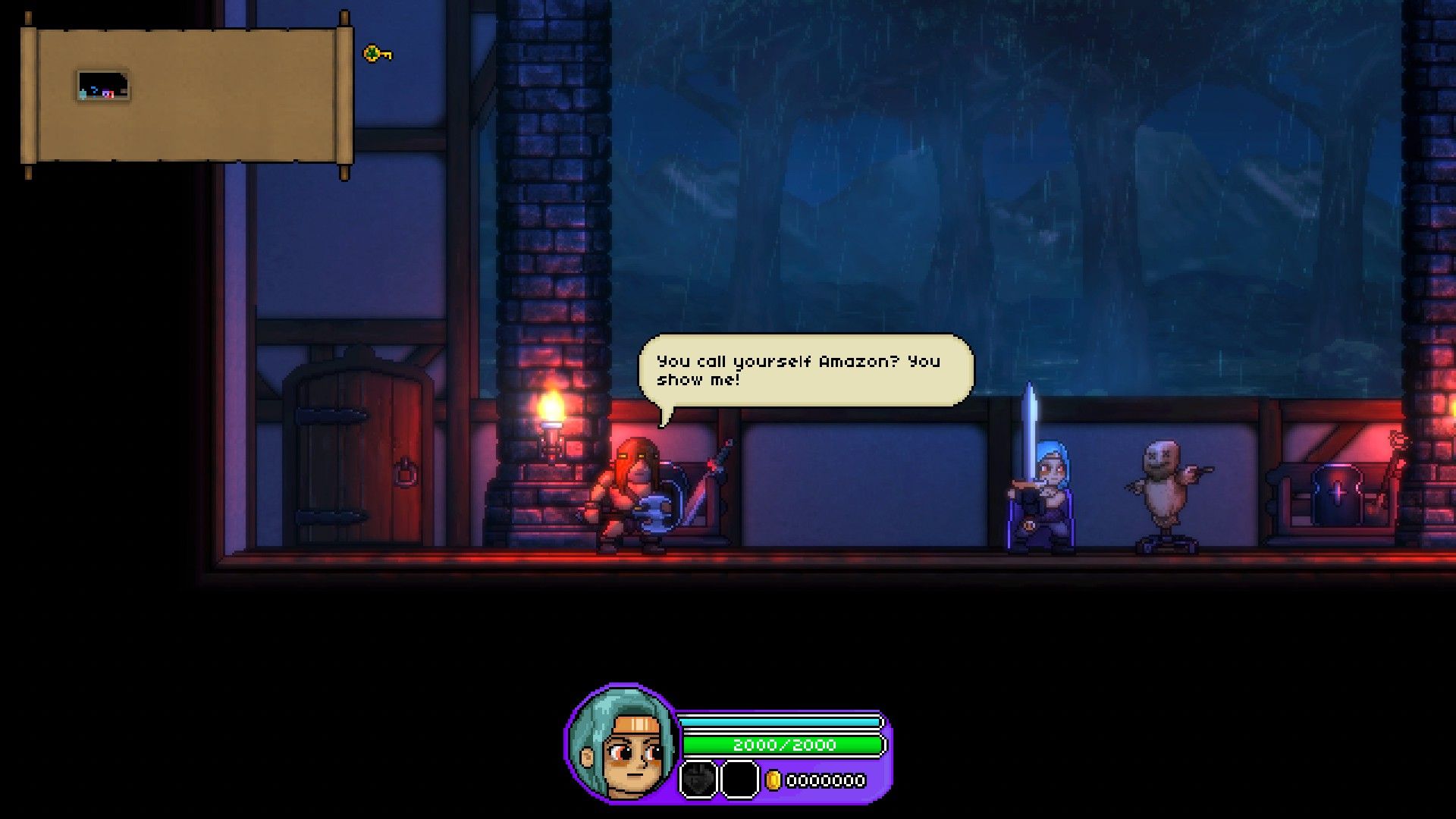
The four classes are Rogue, Warrior, Amazon, and Wizard. These classes all have similarities in convenience, featuring the same formula in button combos that stem from platform fighters. Every class is going to be able to smash the attack button for an auto combo, have many air attack options for enemy juggling, and be able to utilize a special attack button to perform the attacks that are unique to them. The idea is that if you know the controls for one character you will be able to easily pick up a new one and it works phenomenally. But while learning each character may be easy, mastering them will take the bulk of your time.
I spent most of my time playing the Rogue class, which features high damage at the cost of many of the standard defensive moves like parries and blocks that are included in other classes. This meant that my play style adapted to one of zoning enemies constantly, looking for opportunities to strike and utilizing tricks like stealth and dodge rolls to stay out of danger. I really enjoyed how much this class made me think about stamina management; each attack only put me ahead in a fight if I had the energy to roll out without taking a scratch. This contrasts starkly with the Warrior class that is played by attracting all enemies to funneled damage zones that you mitigate using your shield, relying firmly on punishing enemies after they swing on your shield or parrying larger foes. These classes control the same, but their mechanical differences make real success hard to attain without practicing combat.
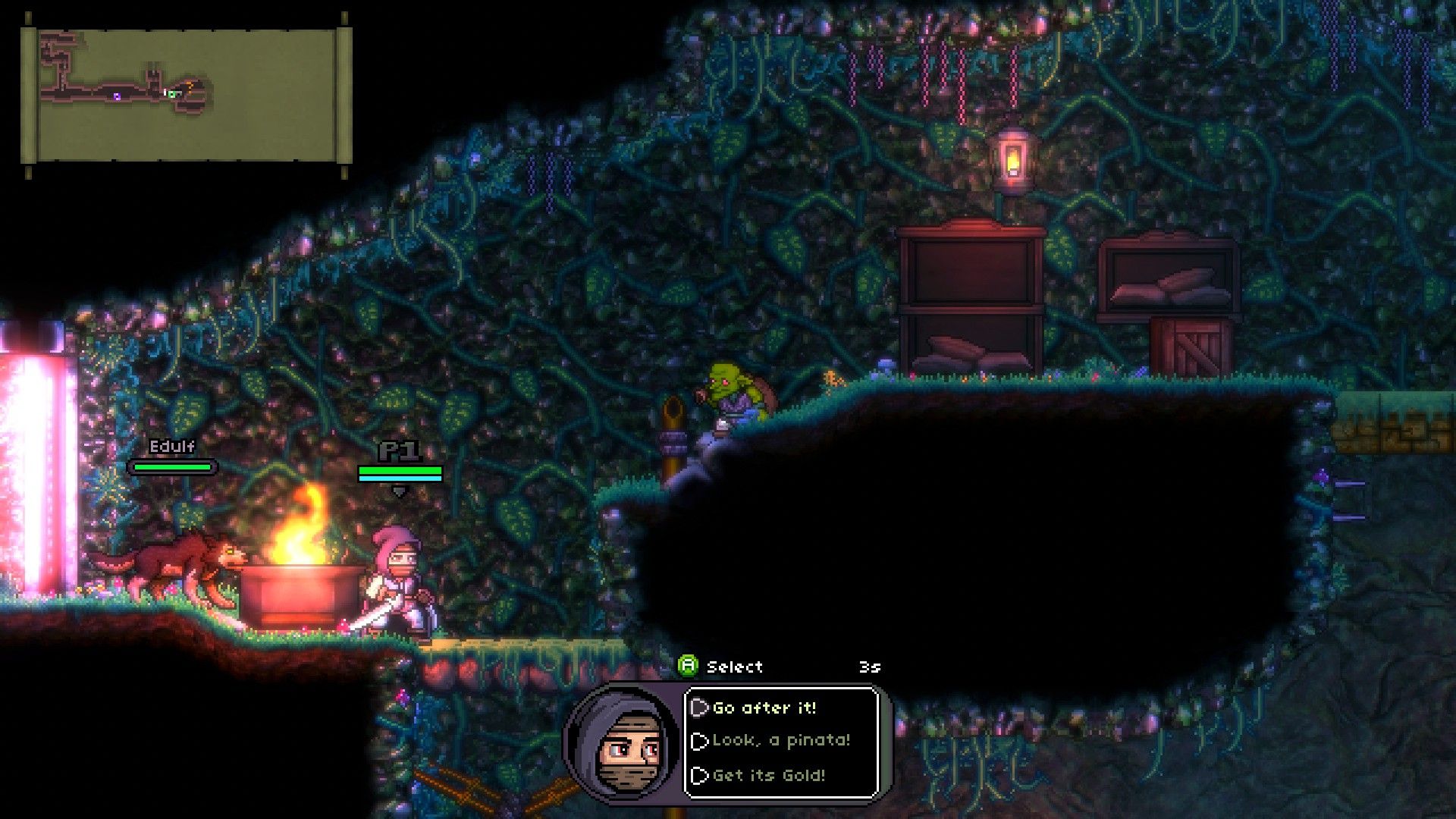
The other two classes are equally as fun and I guarantee that every player will find one that they immediately gravitate towards and one that they will reject. So my haphazard advice is that if you play a round of Bravery & Greed and decide that you hated the combat, don’t reach for the Steam refund button just yet, but instead try just once more with a different class and see if that feels any better.
There is additional depth in the way that characters are created in this game, and that is through their path. Shortly into your first dungeon, you will encounter a large stone statue that you are allowed to kneel before. When you do this, you will be granted a choice to follow one of four deities that will grant you certain passive bonuses. However, once you choose one you are locked into that decision until death do you part. The four deities are Chaos, Order, Life, and Darkness. This gave me a lot more control over the type of character that I was going to be playing, in contrast with a game like Hades in which boons were often awarded at random. Even as the exact build I chose for each run was at the mercy of the gods, I felt like I had a lot of power over exactly what kind of play style I wanted to wane towards.
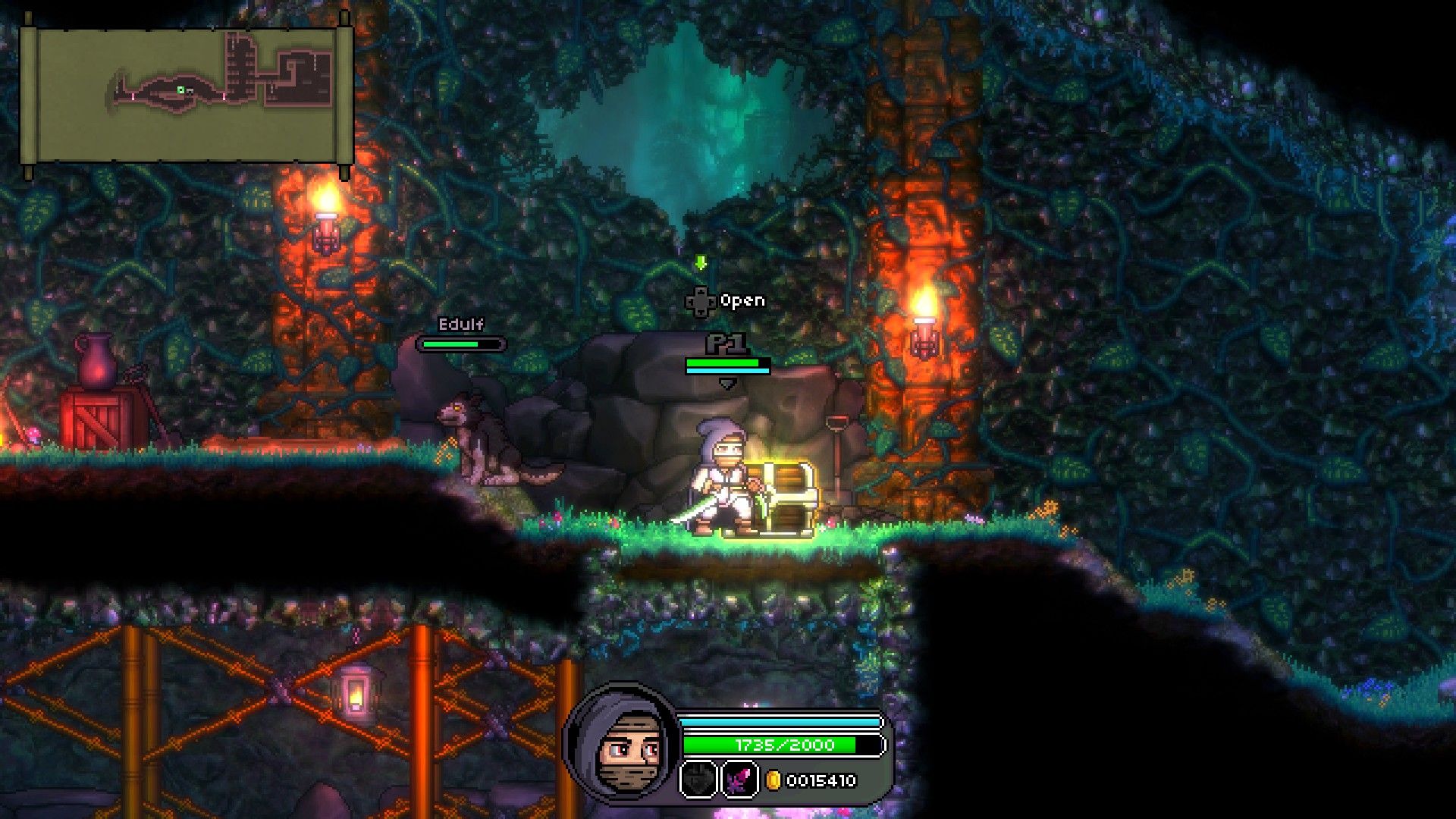
The last piece of the addictive cycle of character building is the loot. Each character has four slots in which they are able to equip one each of a pendant, gloves, boots, and a staff. This game features a wide variety of gear, and while I am not going to pretend that I unlocked and tested every piece, I want to say that this adds so much by consistently engaging the player in character-building. You are awarded loot of some kind after most battles, and one of the many little touches I enjoy about the system is that gloves will often alter your damage type so significantly that it can feel as though you received a magic weapon. This effect can also alter the color and visuals of your main weapon, a nice aesthetic change that makes every run feel just a little bit different. And while gloves steal the show in this regard, I felt that the utility of pendants and boots was very noticeable and made the choice to switch any piece of gear feel impactful.
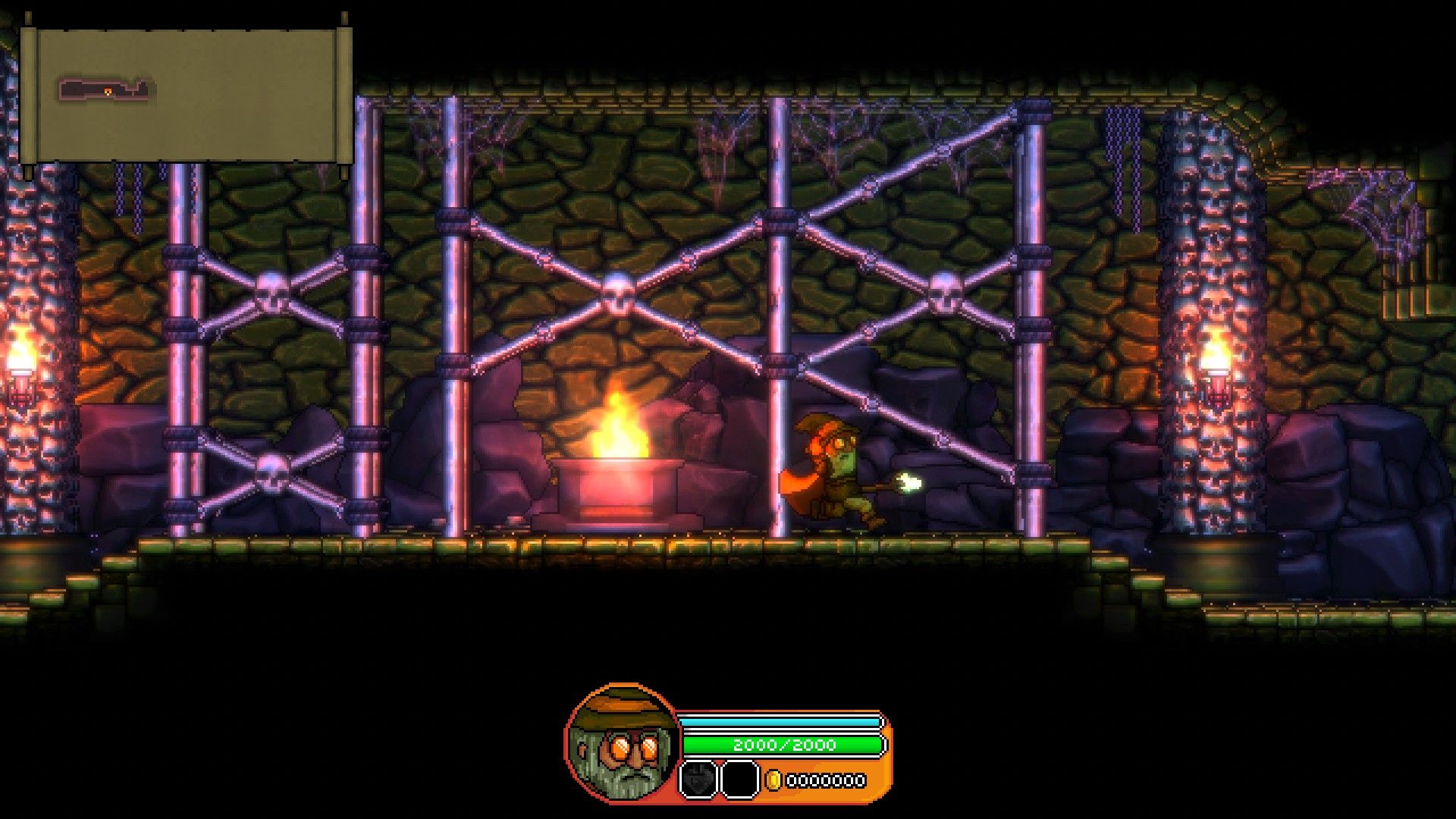
Unfortunately, even though skill-based combat and incredible character-building choice drive the game home, the repetitive environment design can cause Bravery & Greed to drag a bit. There are four main areas in this game and as you complete each one you gain the ability to choose in which order you would like to tackle them. I found that I had my own preferred order, and it was solely based on getting hard areas out of the way first while doing the areas I was more confident in later.
The more I played these areas, I noticed a few disappointing things. The game tries to implement puzzles into its level design, and I ended up seeing the same ones over and over with little variation besides their order and placement. This is a difficult feat of design in a randomly generated game, but I believe that the implementation of more challenging platforming would have been a better use of these rooms instead of solving the same puzzle that you learned the solution to many hours ago.
Traveling through each area also brought to my attention just how similar the layout of each zone is time after time. When I go to the Necropolis I can pretty confidently say that it will entail me hitting a main chamber, finding a key, and then that will lead straight to the boss room. This happens with little variation from run to run. I do want to acknowledge that the game is randomly generated and there may be alternate permutations of these levels that I just haven’t experienced myself. Other than this, even though most of the rooms and hallways are copy and pasted everywhere, the developers did a fantastic job of stitching them together in ways that make me feel like I never know what’s coming next.
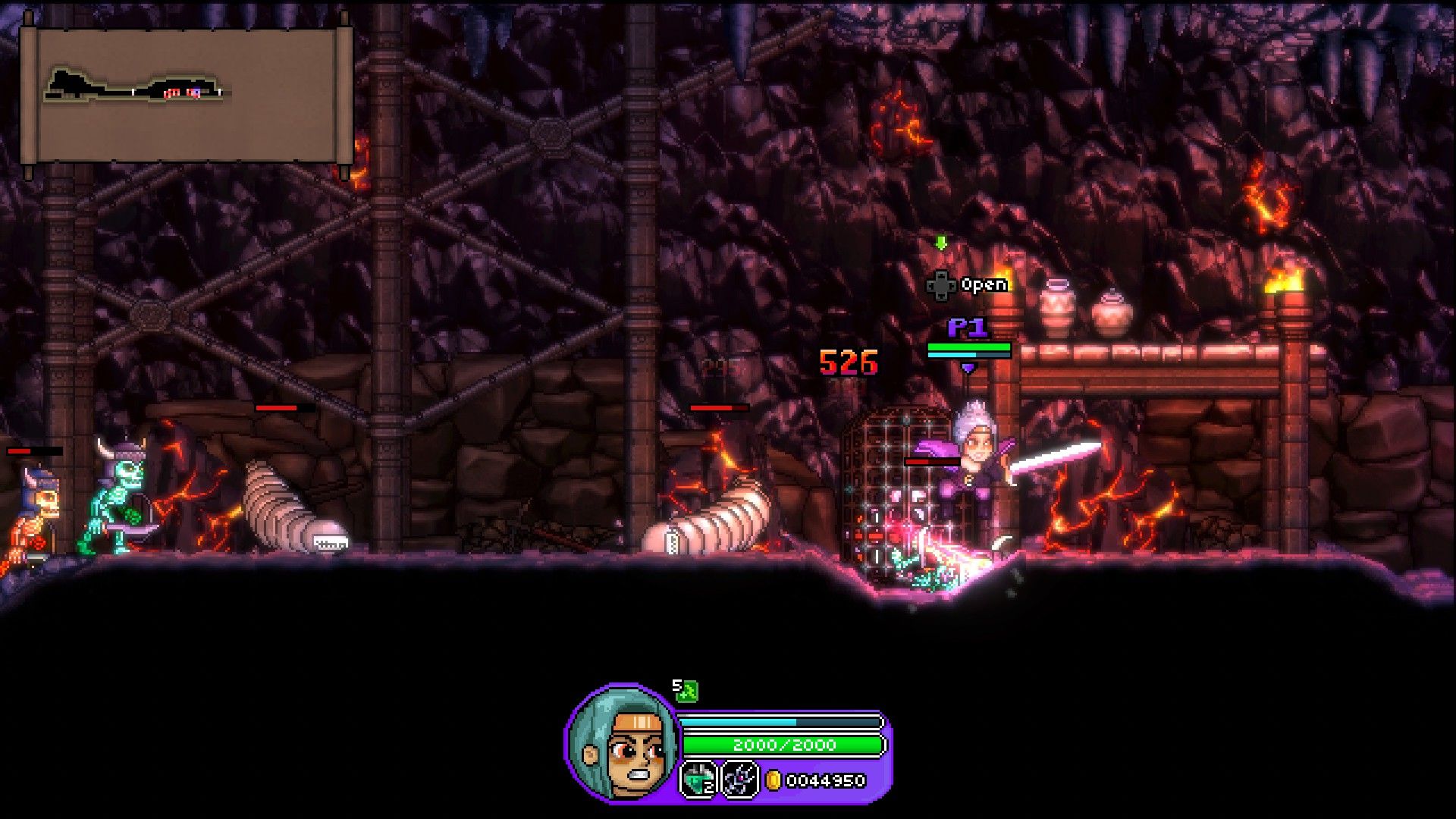
The game features pixel art accentuated by beautiful animations making every movement on the screen pop. The combat looks stylish and flows very naturally, every hit that lands is very well represented visually, and small things like the Amazon doing a helicopter sword spin on mid-combo reversals look as amazing as it feels. I would say that while I am a fan of the art style I find that the animation elevates the visuals of this game above what would normally be standard in the pixel art style. The action complements nicely the well-staged locations which look excellent due to a 2.5D rotation on all the walls; this makes the levels appear more like a dollhouse rather than a scrolling screen. Setting the well-designed backgrounds a little further into the environment adds depth that brings out the star of the game: you and all the monsters you’re smashing.
Multiplayer is a star feature of Bravery & Greed. After trying the mode out with a few friends I have a few thoughts about how this is balanced within a run. Something you should know is that there are no additional chests and those chests do not yield more loot as compared to the single-player mode, meaning you have to delegate loot between party members. This makes a huge difference as opposed to having free reign over your build and not needing to sacrifice loot so that your Wizard can finally get at least one thing. The power level of the group ends up being a little stronger than you would be solo, but playing by yourself lets you have a full set of gear in the first level. Then you can then start tuning, whereas in multiplayer you will see that your loot gain as a group will feel more spread out over the course of the run. It’s fair, however, as in multiplayer you will have to manage being weaker for a longer period of time, which would be much harder as an individual.
Outside of the standard adventure mode, there are two more modes that I consider welcome but minor additions to the game. Horde mode drops you into an arena where you are assailed by waves of the same monsters you face in adventure mode. This mode doesn’t contain any huge rewards, I think that it makes a good warm-up before jumping into a run or a place to practice a new class without having to worry about choosing a path or gear. The PvP mode is exactly how it sounds, I don’t think there is anything particularly special about it, especially because the game only has four classes to play. Although playing against your friends can allow you to learn combat skills that you aren’t used to like parrying or using moves that minimize ranged damage.
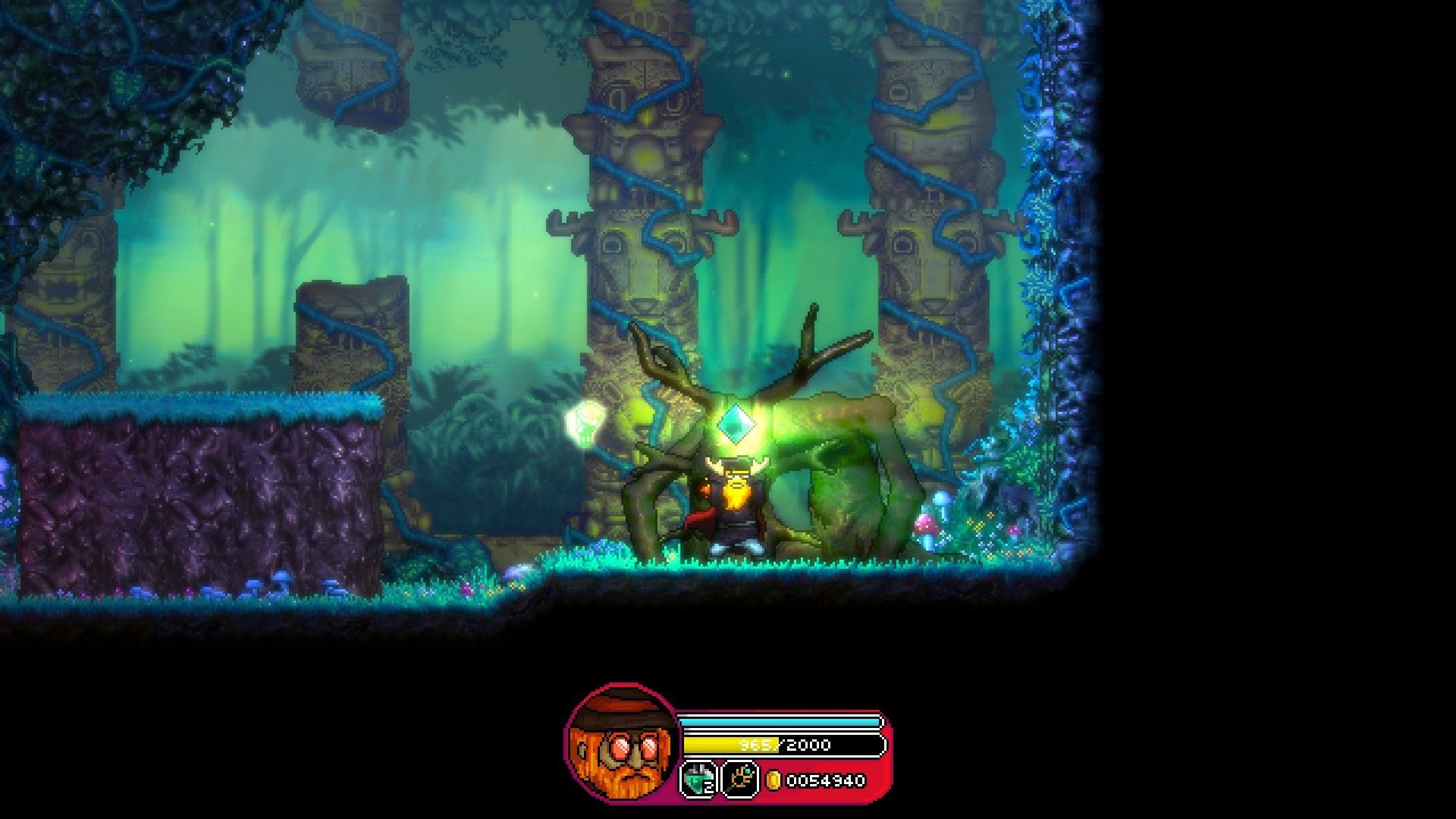
Bravery & Greed is a fun amalgamation of mechanics tested and proved to work by other genre staples. The game even features modifiers and endless modes to keep the game fresh well after you’ve beaten the vanilla adventure mode. The only thing holding this title back from becoming the next huge indie rogue-lite success story is more content in the form of more characters and locations. As much as the developers say that their game features a generic fantasy theme they have given their world life and personality that sets it apart. This game is absolutely worth anyone's time, especially fans of the genre and I can’t wait to see what Rekka Games has in store for the future, whether it be support for Bravery & Greed or a fresh IP.
